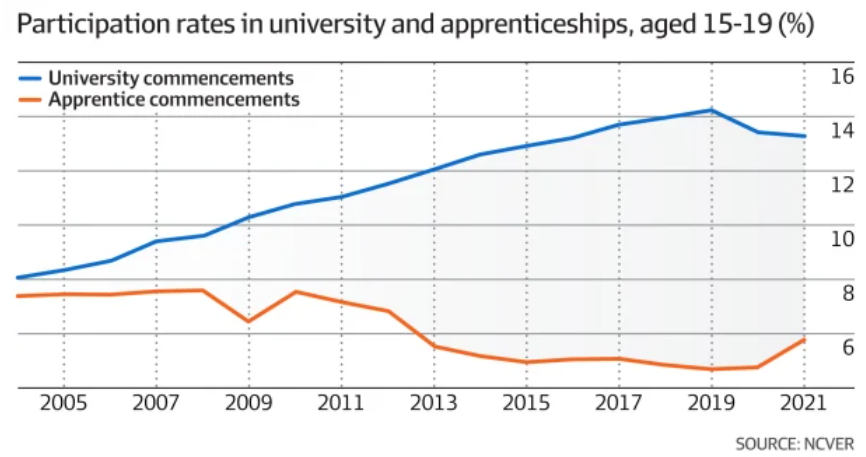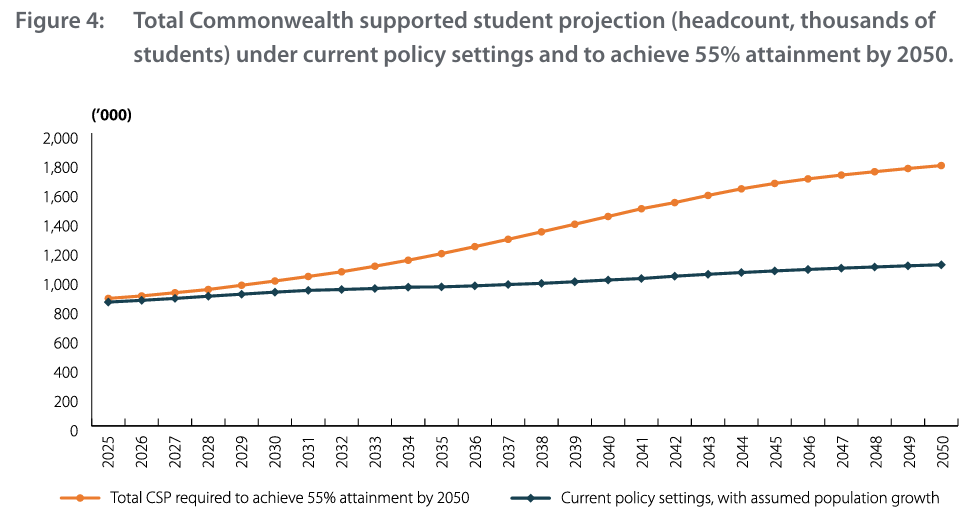For years, MacroBusiness has argued that too many Australians are studying at university instead of TAFE and vocational education.
This has flooded the labour market with useless degrees and resulted in recurring skill shortages in a variety of industries, particularly the trades:

We have received support from Jobs and Skills Australia commissioner Professor Barney Glover, who has recommended overhauling the post-secondary education sector.
Glover claims it has become too heavily weighted for university study, attributing the imbalance to more than a decade of government policies encouraging school leavers to attend university.
“In the decade to 2021, with both political parties in power, higher education qualifications grew by 67% and vocational qualifications by 25%, with the total population growing by 14%”, said Glover.
“It really does put an imbalance into the post-secondary profile. We need to rebalance that to meet the jobs of the future”.
“Our projections show that 90% of jobs growth in the next 10 years will require post-secondary education with 44% requiring a VET qualification and others requiring both VET and higher education”, he said.
“This is even more stark when you consider the construction and infrastructure intensive period ahead as we build houses and transition to decarbonise the economy”.
Meanwhile, over 90% of the 400 occupations on the critical skills shortage list in NSW require only vocational qualifications.
Policy failure has driven the surge in students studying at university.
As The AFR’s Julie Hare explained, “A 2008 national review recommended that 40% of young people hold a university degree by 2020, leading to massive growth in the student population”.
The Albanese government’s Australian Universities Accord Final Report will worsen the imbalance because it sets a target of 55% of young Australians having a university degree by 2050.
To meet its 55% university attainment target, the report states, “the system will need to more than double the number of Commonwealth-supported students in universities from 860,000 currently to 1.8 million by 2050”.

The federal government would need to divert people away from TAFE and vocational education to meet the 55% university attainment target.
Prioritising universities above vocational or trade schools was never in the national interest, socially or economically.
This bias towards universities will only grow under Labor’s Universities Accord, exacerbating skill shortages.

